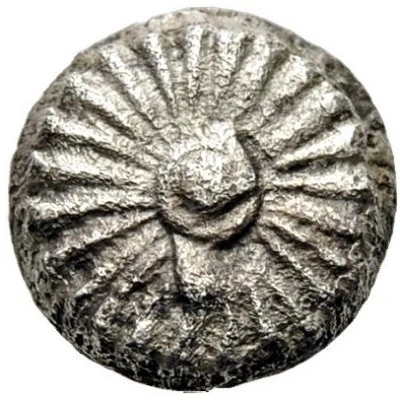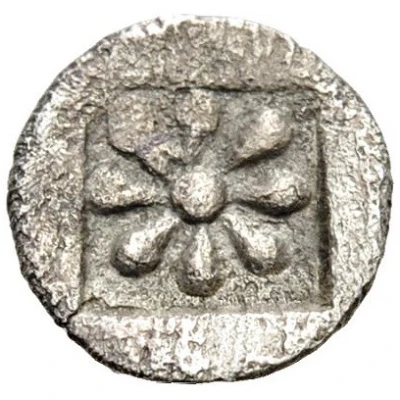


© Nomos AG
Hemiobol 480 BC - 450 BC
| Silver | 0.30 g | 7.0 mm |
| Issuer | Erythrai (Ionia) |
|---|---|
| Type | Standard circulation coin |
| Years | 480 BC - 450 BC |
| Value | ½ Obol (1⁄12) |
| Currency | Drachm |
| Composition | Silver |
| Weight | 0.30 g |
| Diameter | 7.0 mm |
| Shape | Round (irregular) |
| Technique | Hammered, Incuse |
| Demonetized | Yes |
| Updated | 2024-10-10 |
| Numista | N#192456 |
|---|---|
| Rarity index | 97% |
Reverse
Eight-rayed star within incuse square
Interesting fact
The Hemiobol coin was used as a form of currency in ancient Greece, specifically in the city of Erythrai (Ionia) during the 5th century BC. The coin was made of silver and weighed approximately 0.30 grams. Despite its small size, the Hemiobol was an important denomination in the ancient Greek monetary system, and it was used to purchase everyday items such as food, clothing, and other household goods. Interestingly, the Hemiobol coin features an image of a mythical creature called the "Erymanthian Boar" on one side, and an inscription of the city's name, "Erythrai," on the other. The Erymanthian Boar was a legendary creature that was said to be fierce and powerful, and it was often depicted in ancient Greek art and literature. The image of the boar on the Hemiobol coin serves as a symbol of the city's strength and prosperity. Overall, the Hemiobol coin from Erythrai (Ionia) is a fascinating piece of history that provides insight into the daily life and culture of ancient Greece.